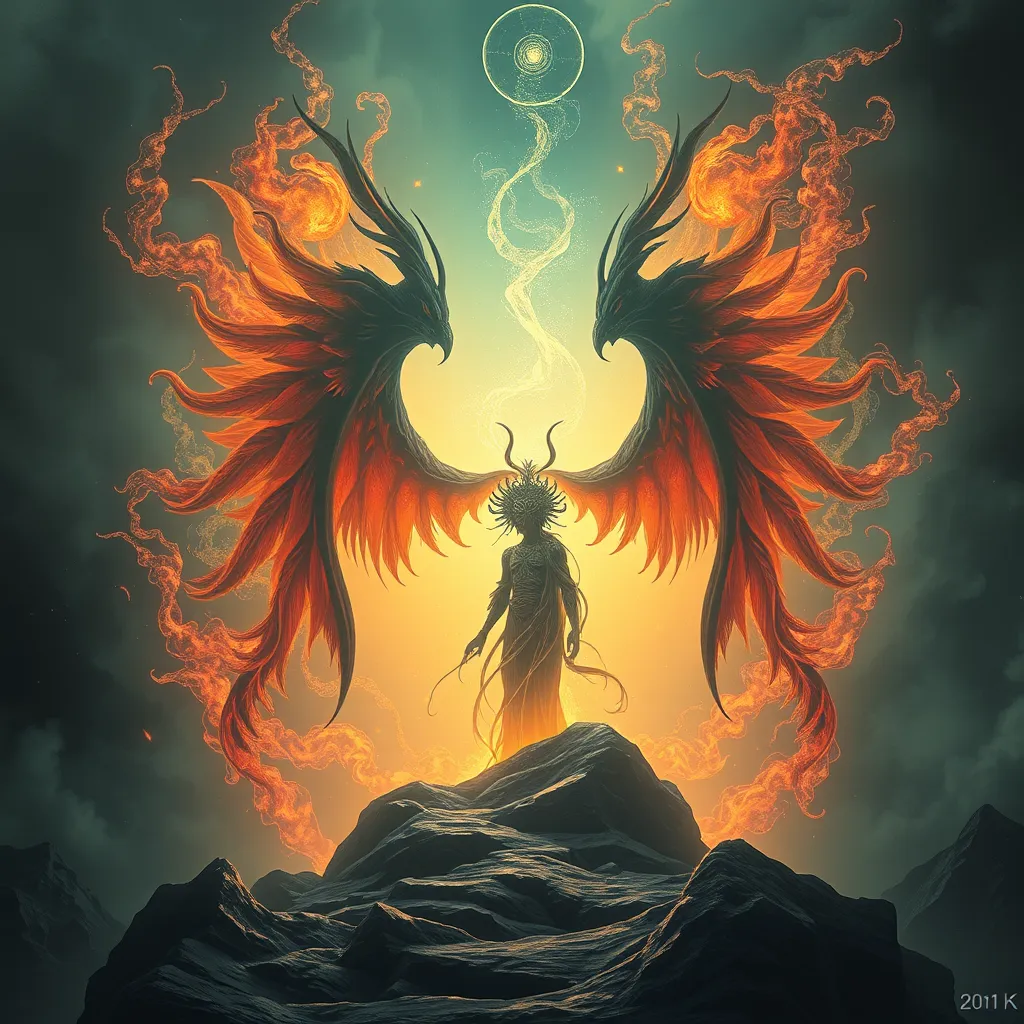The Kitsune’s Journey: Tracing the Fox Spirit’s Evolution Through Mythology
I. Introduction
The Kitsune, a fox spirit deeply embedded in Japanese culture, serves as a fascinating subject for exploration. As a creature that embodies both the mystical and the mundane, the Kitsune has captured the imagination of many throughout the ages. The importance of mythology in understanding cultural symbols cannot be overstated; it provides insights into the values, beliefs, and fears of a society. This article aims to trace the evolution of the Kitsune through various mythological narratives, examining its origins, characteristics, and cultural significance.
II. The Origins of the Kitsune Legend
The roots of the Kitsune legend can be traced back to ancient East Asian folklore. Initially, the fox was regarded as a cultural symbol across various societies, often embodying qualities such as cunning, intelligence, and adaptability.
- Ancient Roots in East Asian Folklore: The fox has appeared in the folklore of several East Asian countries, including China and Korea, where it was often associated with divination and spiritual transformation.
- The Fox as a Cultural Symbol: In early societies, the fox was admired for its cleverness and was often depicted as a creature that could navigate the human and spiritual worlds.
- Initial Depictions and Attributes: The earliest references to fox spirits can be found in texts such as the “Nihon Shoki,” where the fox is often portrayed with ambiguous and mystical qualities.
III. The Kitsune in Japanese Mythology
The historical emergence of the Kitsune as a prominent figure in Japanese mythology occurred during the Heian period, a time of great cultural refinement and artistic expression.
- Historical Emergence: The Heian period (794-1185) saw the Kitsune transition from a mere animal to a revered spiritual figure, often associated with Inari, the deity of rice and fertility.
- Transformation: Over time, the Kitsune evolved into a complex entity, embodying both protective and destructive qualities.
- Duality of Roles: The Kitsune is often depicted as a benevolent protector, guiding and aiding humans, while at other times, it takes on the role of a mischievous trickster, creating chaos and confusion.
IV. Kitsune Characteristics and Powers
The Kitsune is characterized by its remarkable physical attributes and supernatural powers, which contribute to its enduring allure.
- Physical Attributes: Traditional depictions of the Kitsune show it as a fox with striking features, often with a bushy tail and gleaming eyes.
- Shape-Shifting Abilities: One of the most intriguing aspects of the Kitsune is its ability to shape-shift into a human form, which it often uses to interact with people.
- Significance of the Number of Tails: The number of tails a Kitsune possesses is significant—typically, a Kitsune with one tail is a regular fox, while nine-tailed Kitsune are considered the most powerful and wise.
- Connection to Inari: The Kitsune serves as the messenger of Inari, often depicted alongside rice fields and shrines, symbolizing prosperity and fertility.
V. Regional Variations and Interpretations
Across Japan, various interpretations of the Kitsune exist, reflecting regional beliefs and cultural influences.
- Differences in Kitsune Stories: Stories about Kitsune can vary widely, from those that portray them as loyal guardians to those that depict them as vengeful spirits.
- Influence of Neighboring Cultures: The Kitsune has been influenced by similar fox spirits in Chinese and Korean folklore, each contributing unique attributes and stories.
- Modern Adaptations: In contemporary media, the Kitsune has been reimagined in various forms, from anime to video games, showcasing its versatility and appeal.
VI. The Kitsune in Popular Culture
The fascination with the Kitsune extends into modern popular culture, where it continues to inspire artistic expression and storytelling.
- Representation in Literature: The Kitsune appears in classical literature as well as in modern novels, often symbolizing mystery and duality.
- Anime and Film: Japanese anime and films frequently feature Kitsune characters, showcasing their magical abilities and complex personalities.
- Resurgence of Interest: The resurgence of interest in Kitsune mythology reflects a growing fascination with Japanese culture and folklore globally.
VII. Symbolism and Cultural Significance
The Kitsune embodies rich symbolism and cultural significance, serving various roles within Japanese society.
- Symbol of Transformation and Duality: The Kitsune represents the balance between good and evil, wisdom and folly, highlighting the complexity of human nature.
- Role in Festivals and Ceremonies: Kitsune are often featured in traditional Japanese festivals, where they are revered as protectors and bringers of good fortune.
- Influence on Spirituality: The Kitsune’s presence in spiritual beliefs underscores its impact on personal and communal practices, embodying the connection between the human and divine.
VIII. Conclusion
In summary, the journey of the Kitsune through mythology reveals a rich tapestry of cultural significance and evolution. From its ancient origins in East Asian folklore to its prominent role in Japanese mythology, the Kitsune has transformed and adapted, reflecting the complexities of human experience. The enduring legacy of the Kitsune is a testament to the power of mythological figures in shaping cultural identity and beliefs. As we continue to explore these figures in modern society, we recognize their relevance in navigating the intricacies of our own lives.




